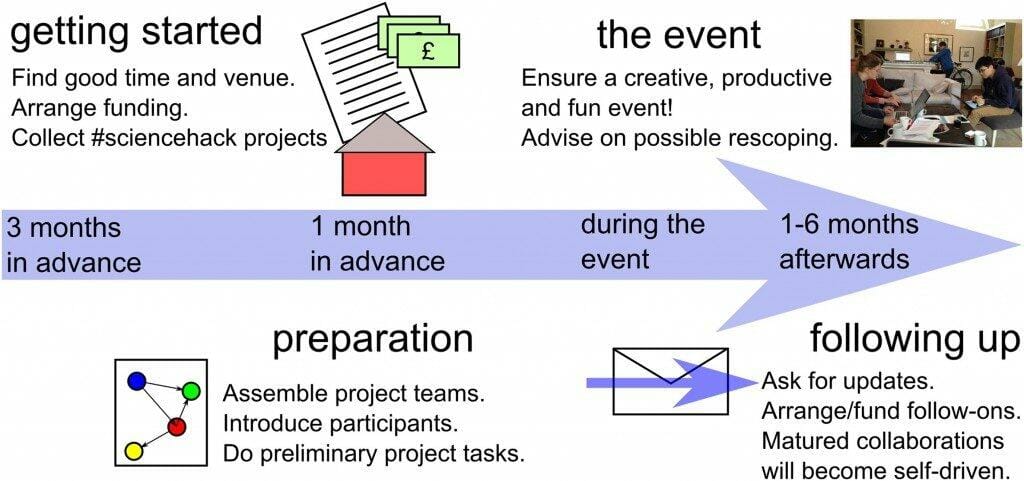Young investigators find themselves in a very demanding career stage, where they must attain their position by publishing good papers, finding funding, collaborating with other researchers and leading a laboratory with inexperienced students. To help with the transition from postdoc to young researcher, Derek Groen and Ben Calderhead, from University College London and Imperial College London respectively, organize science hackathons, that can help young researchers build collaborations and write research proposals. In the hackathons, the unseasoned investigators are exposed to new scientific research questions, explore how their own ideas work in a larger landscape, and develop their own research.
The first science hackathon took place in Flore, Northamptonshire, UK in 2014. There were five projects and 22 researchers. At the end of the hackathon, the researchers had produced six paper drafts and two software packages. The success and satisfaction were enormous, so the funders will back two more hackathons scheduled for late 2015.
According to the creators definition, a science hackathon is “an event where groups of early career researchers are able to work together on new interdisciplinary projects for a concentrated period of time, usually over the course of around three days”. A key feature of hackathons is that they are non-competitive, rather the opposite: they foster open discussion. Scientists of complementary skills work on a research plan that can become a collaborative research proposal and eventually a paper.
Projects, participants, event and follow-up
The authors divide the tasks for organizing a hackathon in four main blocks.
Selecting good projects: Projects should have short term goals, that help participants focus, but also think about new research directions (expandable into future projects).
Matching the right participants: Projects must be interdisciplinary and complementary, so that all the participants are leaders in some part. Also, addressing the same issue from different perspectives is what makes the combined output bigger than the sum of its parts. Groups should have between three and six participants of complementary skills.
Running the hackathon: It should take place in a self-contained, remote venue that avoids distractions, and last three or four intensive days. To avoid interruptions of the flow, presentations must be restricted to the start/end. Some relaxation opportunities are beneficial.
Follow-up: Team leaders should be contacted once a month to know about the progress of the project, and another meeting can be arranged.
More details about the past and future hackathons can be found in the
paper the organizers recently wrote for eLife.


